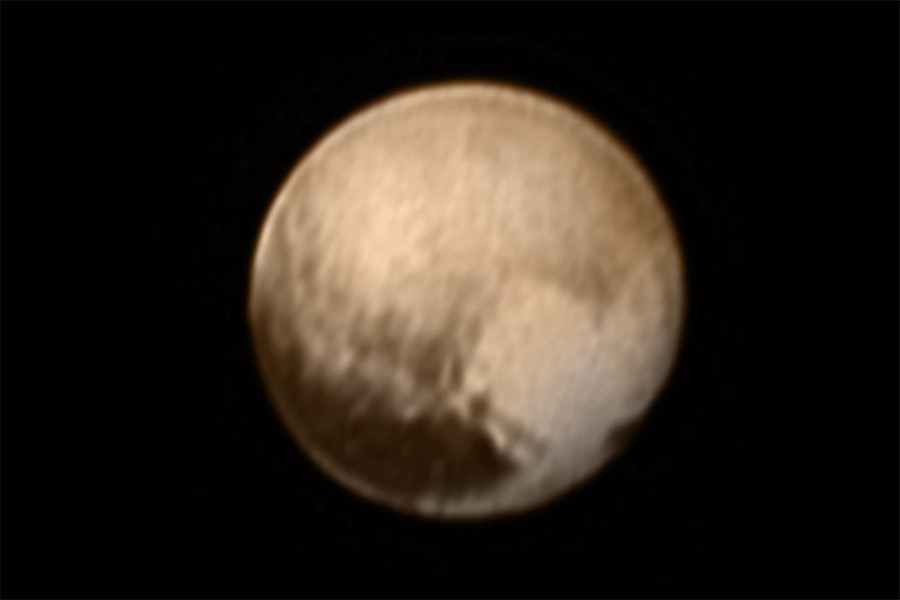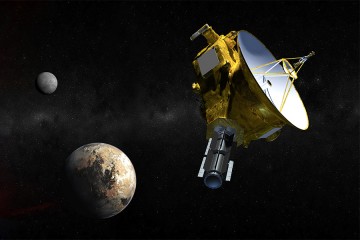A heart, a whale, and a doughnut—that's what scientists are calling the features they're spotting on Pluto as the New Horizons spacecraft gets closer.
Next week we'll be able to see detailed close-ups of the icy dwarf planet for the first time ever, as the spacecraft makes its historic flyby after a long journey nearly 10 years and billions of miles in the making.
Engineers at the Johns Hopkins Applied Physics Laboratory designed New Horizons to get a better sense of what it's like at the very edge of our solar system, by flying past Pluto and its five moons, then continuing on to the Kuiper Belt. The closest approach to Pluto will take place the morning of July 14, giving us images of the dwarf planet on par with shots of Earth taken from space.
But the spacecraft's telescopic camera is already showing Pluto's features sharpening into focus. The latest image, captured Tuesday, shows a 1,200-mile heart-shaped bright area that scientists believe may be a patch of fresh frost. Stretching around Pluto's equator is a dark band, nicknamed "the whale," the tail of which seems to be cradling a bright doughnut-shaped spot.
The image is the first captured since the July 4 anomaly that temporarily sent New Horizons into safe mode. The next image is expected Saturday, according to APL.
Posted in Science+Technology
Tagged applied physics laboratory, space exploration, nasa, new horizons










